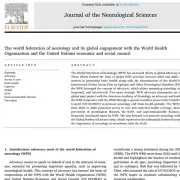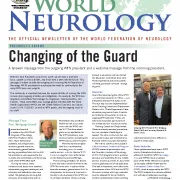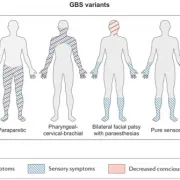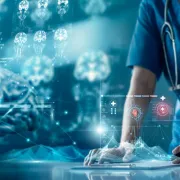Neurology News

New JNS Publication Highlights Global Neurology Engagement | World Federation of Neurology
27 Dec 2025
A newly published article in the Journal of the Neurological Sciences explores the World Federation of Neurology’s expanding role in global advocacy, education, and international collaboration to improve neurological care worldwide.

Insights Into Headache Disorders
23 Dec 2025
The Global Burden of Disease (GBD) report, the most comprehensive study of death and health loss globally, probably needs no introduction to most readers. New estimates for the entire series (from 1990 onward) are published every two years. The standardized method, including calculation of years lived with disability (YLD), allows for a comparison of the burden between disorders.

Critical nodes in precision diagnosis and treatment of Alzheimer's disease
22 Dec 2025
A new review explores how advances in Alzheimer’s disease (AD) research are linking core disease mechanisms with emerging biomarker strategies. The article focuses on key pathological processes such as β-amyloid accumulation, Tau hyperphosphorylation, neuroinflammation, and mitochondrial dysfunction as central targets for therapy.

World Neurology: November-December issue now available online
18 Dec 2025
This issue provides the results of the election at October's Council of Delegates, which was held at the World Congress of Neurology (WCN) in Seoul, South Korea.

Autoimmune neuropathies: New guidelines and expert insights into clinical decision making
17 Dec 2025
A new article explores how deep learning (DL) is transforming neuroimaging for the early detection and monitoring of neurodegenerative diseases (NDDs). While DL models have shown impressive diagnostic accuracy, their clinical use remains limited by real-world variability across scanners, sites, and patient demographics.

A global call to strengthen neurological care for all
15 Dec 2025
The Lancet Neurology and WHO data reveal neurological disorders affect over 3 billion people and cause 11 million deaths annually, exposing critical gaps in global health policy, funding, workforce and access.

Journal of the Neurological Sciences issue 479 now available
15 Dec 2025
Vol. 479, December 2025 now available

eNeurologicalSci (eNS) December 2025 issue
9 Dec 2025
The WFN December 2025 issue of the OPEN ACCESS journal eNeurologicalSci Vol. 41 is now available online.

New GBD Analysis Shows Neurological Conditions Affect Over 180 Million People in the U.S.
28 Nov 2025
Cross-sectional study of the Global Burden of Disease 2021 study data found that, among the US population of 332.7 million, disorders affecting nervous system health impacted 180.3 million US individuals and were the top cause of disability, with 16.6 million disability-adjusted life-years.

Malaria Vaccine Deal Opens the Door to Wider Child Immunisation
27 Nov 2025
Gavi and UNICEF announce equitable pricing deal for malaria vaccine to protect 7 million more children by end of decade







